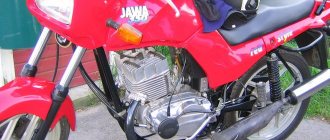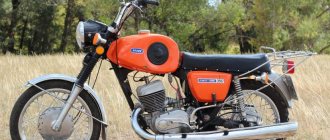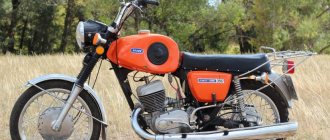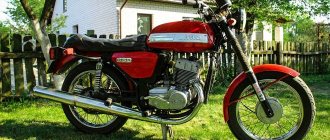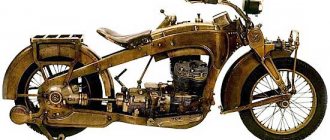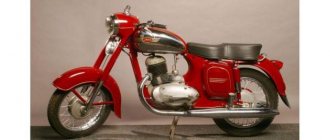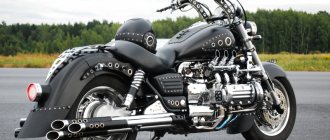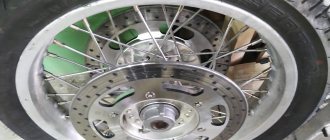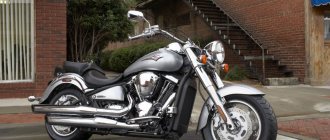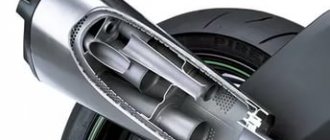More than a hundred years ago, in 1916, the construction of a plant aimed at producing rifles and machine guns was started in the city of Kovrov. The flames of the First World War were just burning, and weapons were needed at the front more than ever. A couple of years later, in the 18th, after the Bolsheviks came to power, two famous gunsmiths were sent to the plant - Fedorov and Degtyarev.
Degtyarev Vasily Alekseevich
It was named after the latter almost thirty years later and still exists under that name. And the story of how they switched to producing motorcycle products is very typical for the post-war period and is similar to the history of the Minsk plant. The country urgently needed to restore its industry, and therefore many military enterprises were transferred to peaceful lines. Thus, the building blocks for the future appearance of the legendary brand of Soviet motorcycles were laid.
Remember your roots
Stolen trophy
At first, the plant did not produce its own, original products, but riveted a copy of the captured German motorcycle DKW-RT125.
DKW-RT125
They called it K-125 and produced five thousand copies per year. The model took root in the Soviet market
Prototype
In 1954, the plant created its own design bureau, the goal of which was to put into production products invented by the genius of the union mind. The result of long work was the Kovrovets K-125 motorcycle, which was released in 1957. It was simple in its core, hence it was reliable.
Which motorcycle is best for you?
JavaSunrise
And I was pleasantly pleased with its affordable price. It was popular among rural residents and city lovers of nature walks. Considered the prototype of the Voskhod series motorcycles
Price
The cost of the Voskhod-ZM motorcycle on the secondary market is low - on average 25-30 thousand rubles (depending on the condition it can range from 15 to 50 thousand rubles), which makes the purchase quite affordable.
The cost level is determined based on various indicators:
- general condition;
- technical characteristics;
- Year of release;
- availability of repairs;
- appearance.
The low mileage of the motorcycle guarantees its high demand.
And off we go
"Sunrise"
Published in 1965. It had a more powerful engine compared to the Kovrovets - 10 hp. This engine allowed it to accelerate to 95 km/h. He weighed 105 kg. Like its predecessor, it was distinguished by its simplicity in its design. On the one hand, this caused criticism from some motorcyclists, since the motorcycle turned out to be unsightly and simple in appearance.
Kovrovets K-125
But on the other hand, this was compensated by the fact that it could be repaired almost with improvised stones and sticks. It was wildly popular among the people; up to two hundred thousand models were produced per year! It continued to roll off the assembly line until 1971.
“Voskhod-2”
Since the previous model was a great success and did not cause any complaints, it was decided not only to refine and improve some aspects. Outwardly he became attractive, no one blamed him for his dullness anymore. It became easier to use and lasted longer. The engine was one and a half horsepower more powerful than its predecessor - 11.5. This allowed it to accelerate to 100 km/h. The fuel tank held 13 liters of fuel, and gasoline consumption at an average speed of 60 km/h was only 3 liters.
Motorcycle "Voskhod 2"
It is no wonder that he was also in demand among the people. A year later, a modernized version of Voskhod-2M appeared, which had a 14 hp engine. and can accelerate to 105 km/h.
“Voskhod-3”
The series received its next continuation in 1979. Changes affected the fuel tank, which now had a capacity of 2 liters more than its predecessor.
Expert opinion
Alexander Nikolaevich Rumyantsev
Inventor, owner of many patents, candidate of technical sciences, professor at St. Petersburg Technical University.
We installed modern brakes, updated the generator and saddle, making it more comfortable for long journeys. The wheels became stronger, which was useful in the conditions of bad Soviet roads.
The speed of movement remained at 105 km/h. And the weight increased to 125 kg.
“Voskhod-3M”
In 1983, the 3rd model was modernized, which is still considered the next generation in the series due to the number of innovations and innovations. Over the course of several years, engineers and members of the design bureau have been collecting and summarizing reviews from ordinary users about the plant’s motorcycles in order to fully satisfy the needs of Soviet motorcycle enthusiasts. We started with the appearance, since in every second letter sent to the plant, great attention was paid to this particular characteristic.
Motorcycle "Voskhod 3M"
The design has become more streamlined, models of different colors have appeared. Updated tires improved road grip. The brakes were modernized, their drive was changed, making them more reliable and wear-resistant. For the first time in the series, a factory anti-theft lock was installed. The weight of the two-wheeled friend was slightly reduced to 122 kg, but the maximum speed remained the same. The price still remained at a very affordable level, which had a significant impact on its popularity among the people.
In 1984, a limited edition luxury model was released. The outer one stood out with its chrome details. We also changed the shape and filling of the saddle, making it even more comfortable. With an engine similar in power to previous models (14 hp), it could accelerate to 115 km/h due to more modern filling. It was produced for two years, until 1986, and was in demand among collectors and big fans of the brand. The exact number of copies produced is unknown.
In 1985 they also produced models aimed at the target audience of tourists. We changed the steering wheel, making it more sports-oriented, and added a rear bag and two side bags. With a weight of 125 kg, the maximum speed was 145 km/h.
“Voskhod-ZM-01”
The series was continued in 1989, when the USSR was on the verge of collapse. What is noteworthy is that the model survived both these turbulent times and the turbulent 90s, but at the present time it is not produced.
Voskhod-3M Lux
The engine had a power of 15 hp, and the volume of gasoline consumption was reduced. It has two modernizations - “Owl” and “Courier”, but they have nothing to do with the Soviet Union.
Technical characteristics of the Voskhod motorcycle
Motorcycles of this type have a two-stroke single-cylinder engine and a four-speed gearbox. These bikes have a simple but quite strong closed-type welded tubular frame mechanism. The motorcycle is extremely light in weight – about 110 kilograms. Its capacity was as much as 13 liters. The length was approximately 1930 millimeters, while the wheelbase did not exceed 1300 mm. The width of the motorcycle is 690 mm, and the height is only 1010 mm.
If we continue the conversation about the technical parameters of the Voskhod, we can say that the engine volume in the all-terrain vehicle was 173.8 cm3, and the highest power was about 7.37 kW at 5300 rpm. The G411 alternator itself could provide work, so operation is possible without a battery.
Design
The design profession did not exist in the USSR, and stern designers were guided mainly by considerations of practicality. Voskhod 2M was the result of their labors, which is clearly visible from the photo: square, angular, without a hint of any grace, a kind of hard worker, strong, but unprepossessing. However, given the age of the model, now its design does not play a role, since this motorcycle is valuable in itself due to its advanced age.
Frequently asked questions
- What about the interchangeability of spare parts from other Voskhods? Everything is fine with the interchangeability of spare parts; many things fit from other ZiD motorcycles. Some units can be picked up even from the latest models, “Owl” and “Courier”.
- Is it possible to install a 6V generator on it? The original is nowhere to be found. The nominal voltage of the standard generator is 7V, but 6V is also most likely suitable.
- Is it possible to find a copy with a side stroller? There are no original strollers for this model and never have been. However, sometimes you can find “collective farm” versions with strollers from “IZh” or “Java” on sale.
“I would never have believed anyone that it was possible to make “Voskhod” from “Vostok”
After several postponements, the launch of the Voskhod-1 spacecraft took place on October 12, 1964.
“Korolev was outwardly calm, but I knew that he was worried more than usual. Apparently, trying to distract himself from doubts, he turned to me twice: “Nikolai Petrovich, are you worried? What can you do, I’m shaking all over myself.” After five minutes of readiness, we went into the bunker. At exactly 12:30 local time (10:30 Moscow time), the rocket carrying the first three-seat Voskhod spacecraft began its ascent. A painful 523 seconds and... a sigh of relief - the ship entered orbit! - recalled Nikolai Kamanin.
An amazing thing, the flight of which even the top leaders of the Soviet space program doubted the realism, went surprisingly smoothly. The crew, despite being in an extremely cramped position in the cabin, asked to extend the mission for another day. But, as Kamanin noted, “an extra day of flight could not add anything to the victory.”
The Voskhod-1 flight lasted 1 day 17 minutes 3 seconds. When the search team reported that the crew was alive and well, Korolev said: “Is it really all over, and the crew returned from space without scratches? I would never have believed anyone that it was possible to make a “Voskhod” from the “Vostok” and three cosmonauts could fly into space on it.”
The success was truly significant. The Americans were in shock. While they are just preparing two-seater ships, the Russians already have three-seaters! Naturally, they were not given details of the transformation of “Vostok” into “Voskhod”. But the tale of Lefty clearly hinted that there were no impossible tasks for the inhabitants of one sixth of the land.
From Sunrise to Sunset. The feat and drama of cosmonaut Egorov Read more
Tuning options
Refinement of the design involves internal or external tuning. During internal modifications, the engine is rebuilt, driving parameters, suspension, and brakes are optimized. When external modifications are made, the motor vehicle is given a sporty style or it is converted into a chopper.
Features of internal tuning
Owners often rework the Voskhod-3M engine. To increase engine thrust, the factory paper air filter is replaced with foam filter elements. This helps reduce air exhaust friction. Then the jets and diffusers are polished using an abrasive material, the diameter of which affects the volume of fuel entering the engine.
To improve the fuel exhaust system, a new modernized carburetor is installed. From the existing pipe, take flanges for mounting on the cylinders, grind out aluminum bushings, and cut off the flange from the exhaust pipe. In an old carburetor, take a second flange. Using cold welding, the parts are connected.
The design is adjusted until it fits perfectly into the exhaust channels. Internal gaps are filled using epoxy glue.
Often rear adjustable shock absorbers are installed and sports tires are installed. When performing such tuning, the motorcycle becomes more aggressive and sporty.
Performing external tuning
In a sporty style
With a low seating position and a high front fork, there is a desire to modify the motorcycle in accordance with the sporty style. To do this, raise the rear shock absorbers and replace the exhaust pipe elbow. This way the exhaust pipe is level with the rear axle. Exhaust pipes with a larger diameter will improve the design and increase the traction of the bike.
External modifications can include painting, chrome plating, installation of nickel-plated arches instead of the old factory protection, installation of large rear-view mirrors, stepped seats and wheel tuning.
At the end of the tuning, a sports fairing is installed.
Chopper
When performing tuning for a chopper, shortened rear shock absorbers are cut off or purchased. Thanks to this replacement, the rear of the motorcycle will be lowered by several centimeters. The rear fork and wheel are replaced with wider ones. The angle of inclination of the front fork axis is replaced, and the cylinder covers are equipped with chrome plated cups. The same style is followed when tuning the headlights, rear lights, and dashboard.
Tuning for Cafe-bike
With such a modification, to reduce costs, they weld the rear part of the frame with their own hands, shorten the fork, trim and adjust other parts. For the steering wheel and seat, your own strength may also be sufficient. A headlight with a brake light is installed from trucks.
Most owners can carry out tuning on their own using only purchased parts due to the simplicity of the designs and the low cost of spare parts.
Are there any disadvantages
But this bike also has several disadvantages. First of all, this concerns the appearance of the model. Looking at the photo of Voskhod 2, it becomes clear that you won’t show off such a vehicle to your friends (unless after styling). In addition, the bike’s frame is a little unsuitable for riding on dirt roads or roads with poor pavement (at the same time, the 2M model does not have this drawback).
